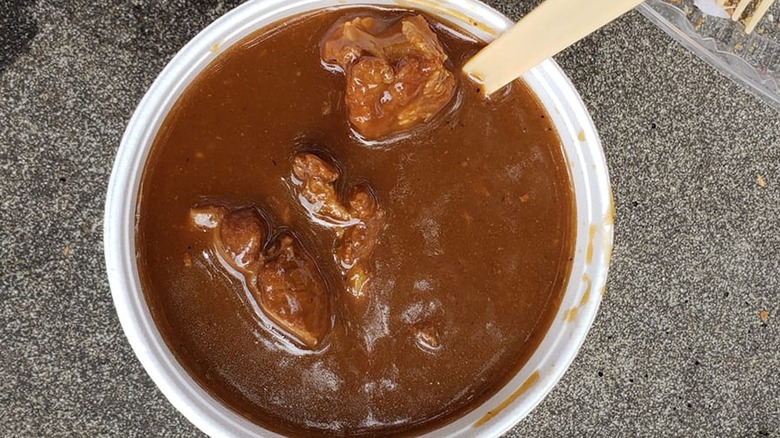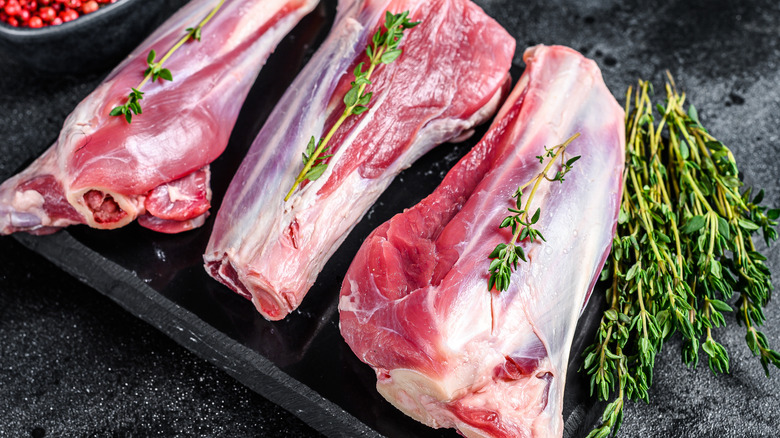Goat Water Is The Flavorful Caribbean Stew You Should Know
Although overlooked in the U.S., goat is a delicious — as well as globally popular — protein choice. Consumed in Asia, Africa, the Middle East, and South America, it's particularly loved in the Caribbean, where the meat is a cornerstone of many regional culinary classics.
Such is the case in Montserrat, in the Caribbean's Lesser Antilles chain, where the animal is the star of the national dish — goat water. In this stew, the meat's earthy, slightly gamey taste melds with a bouquet of spices and aromatics. Usually simmered down to a thick consistency, the dish incorporates a broad range of flavorful ingredients, including onions, chili peppers, fresh herbs, and even a shot of Caribbean rum to finish.
The ingredients blend together to offer a savory, aromatic stew, with the tender goat pieces slow-cooked in the broth for maximum flavor. When served with potatoes, dumplings, rice, or crunchy bread, goat water is equal parts delicious and comforting. Let's dive into how this tasty Caribbean stew came about.
Background of goat water
Montserrat's national dish traces its origins to hearty Irish stew, and has African roots as well. The island — a British Overseas Territory — has abundant Irish ancestry, with immigrants arriving since the 17th century. Those who came to the island established grazing lands across the island's lush and hilly landscape. And St. Patrick's Day is still celebrated in style on the island. The arrival of enslaved Africans to work sugar plantations further altered both the island's culture and culinary creations. Hence, the dish name includes water, the West Indian vernacular for stew.
Today, the dish is made for communal enjoyment. Eaten during weddings, anniversaries, and parties — as well as on Friday afternoons — it's interlinked with a festive atmosphere. Although especially celebrated in Montserrat, goat water is also eaten in the neighboring Caribbean nations of St. Kitts and Nevis, Aruba, Jamaica, and others. Each island crafts the soup with slight differentiations, with varying ingredients and consistencies. While the water part of the name implies that the stew is watery, it can be anything from quite thin to very thick. Here's how the rich dish typically comes together.
How goat water is prepared
Goat water incorporates bone-in meat, as well as a range of other cuts, which lend it a rich flavor. The variable assortment of spices and herbs can include mace, thyme, cloves, bay leaf, and parsley. A fresh chili pepper adds a dash of heat, as well as garlic and onion for an aromatic backbone. Renditions prepared in Montserrat also include rum, or Irish whiskey as a nod to its roots.
Today, many home cooks choose to simmer down the soup in a pressure cooker; however, traditionally, it's prepared in a big pot over an open wood fire to imbue a smoky flavor. Cooking starts by either browning the goat first, or immediately bringing it to a boil in water. The flavorings are added in next, and the stew is simmered down, until the meat falls of the bone. Some thicken the stew further with a flour slurry, while others add potatoes or flour-based dumplings as a filler. The shot of rum is added at the end of preparation. The stew is typically served with bread, and enjoyed with a beer.


